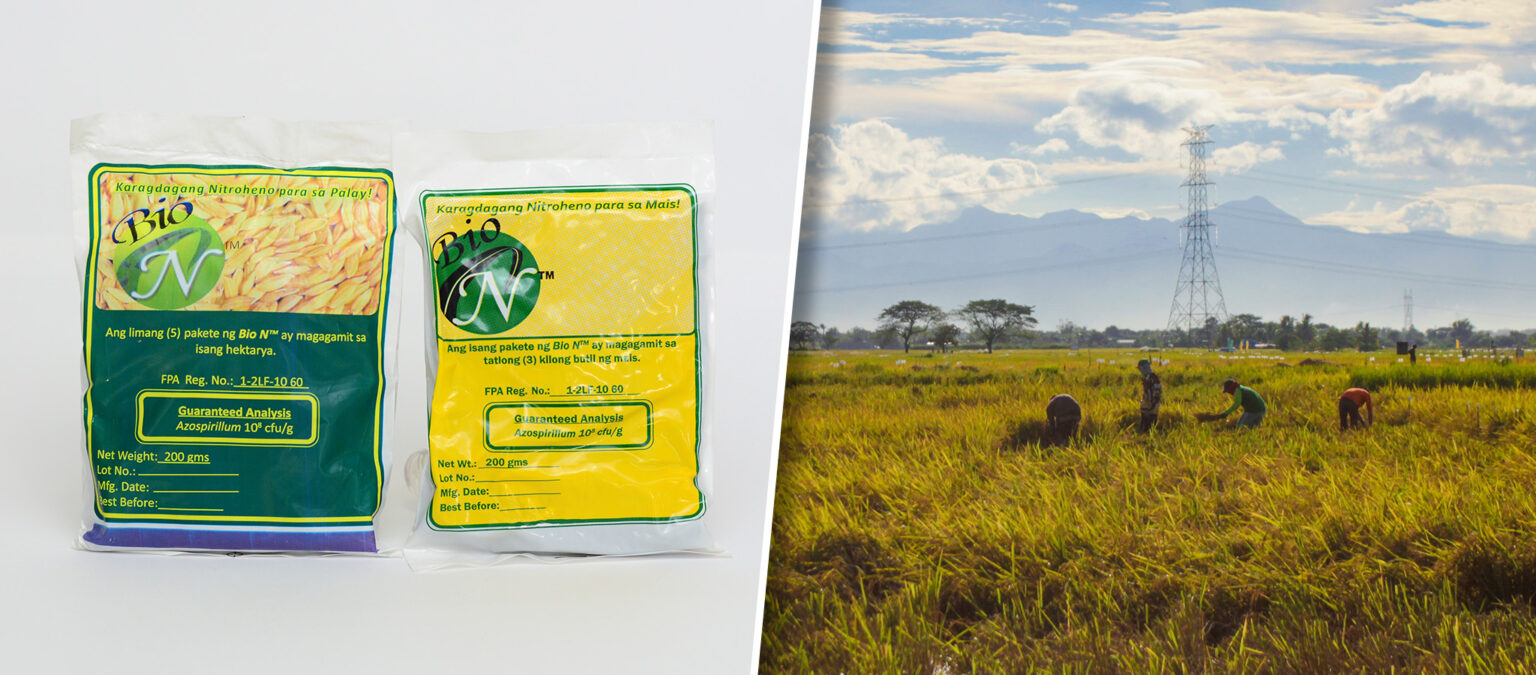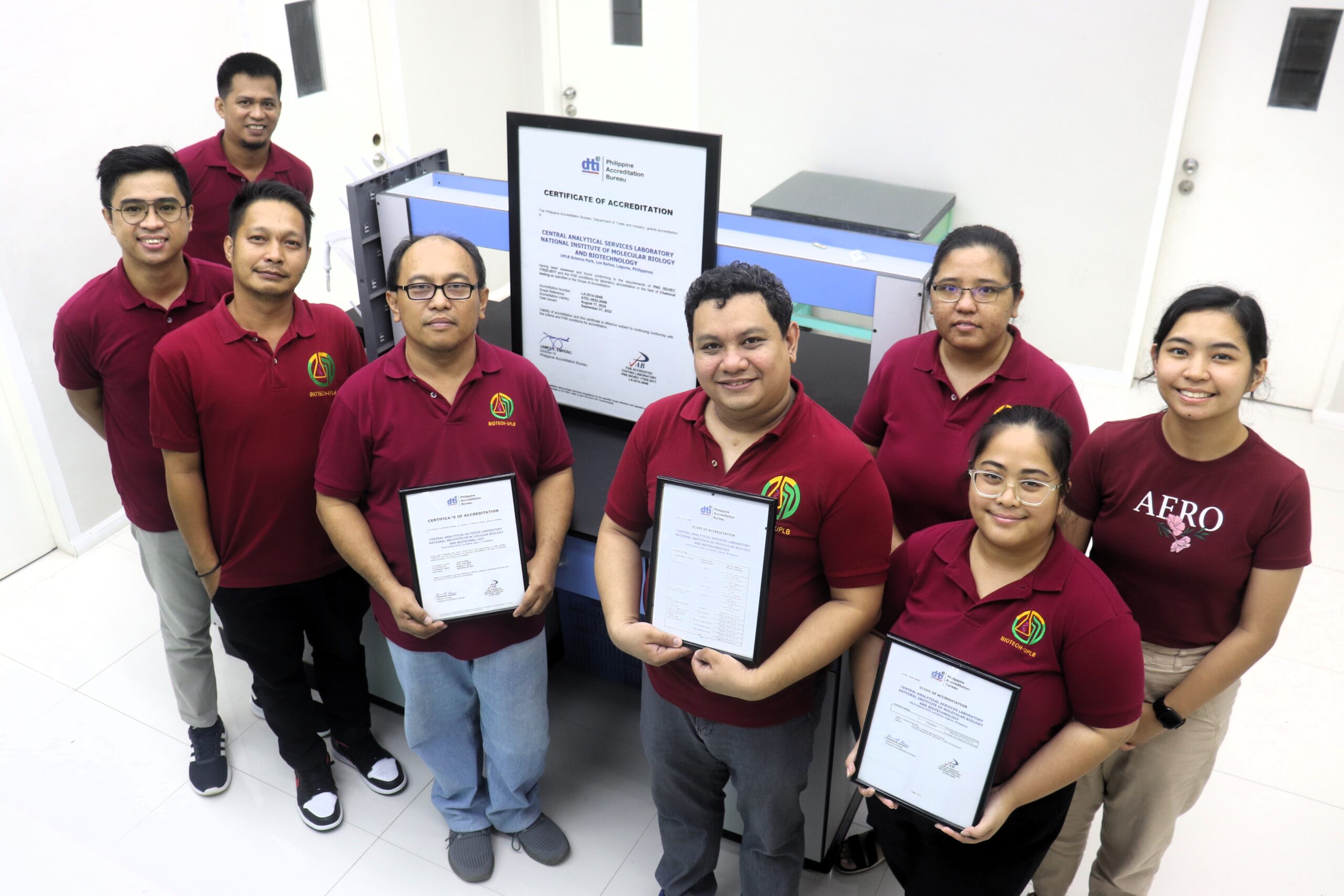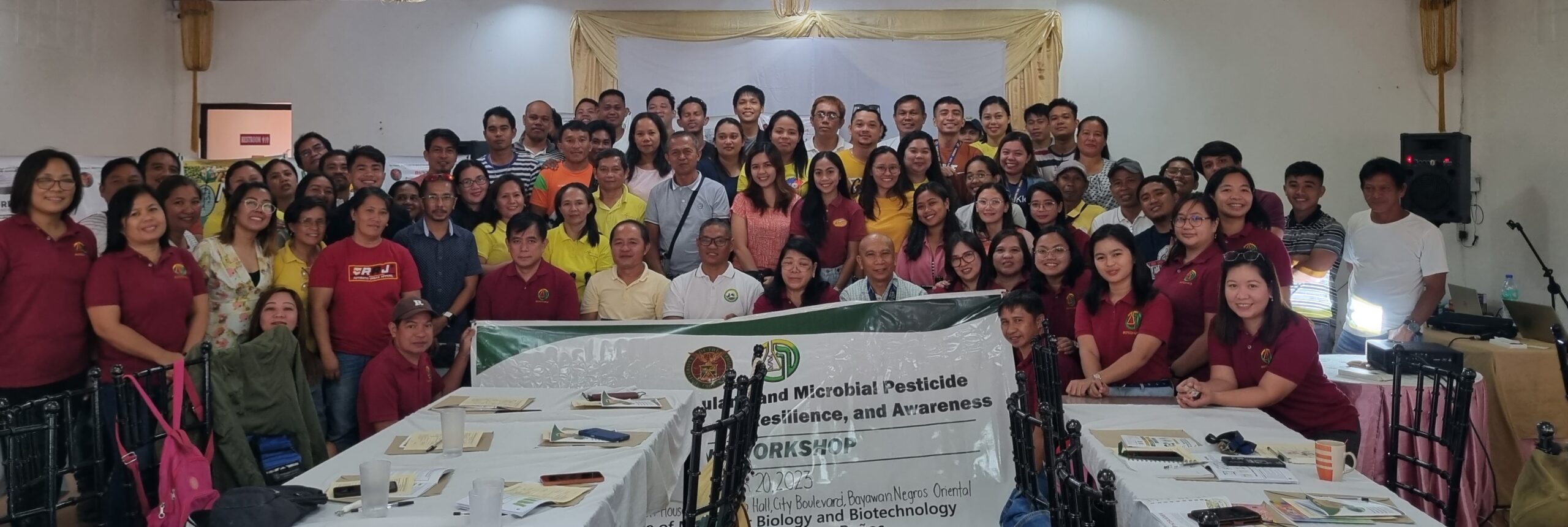
Use Bio N today, keep high farm costs away
Almost 40 years after its discovery, the Bio N biofertilizer of the UPLB-National Institute of Molecular Biology and Biotechnology (UPLB-BIOTECH) continues to ease the burdens of struggling farmers who have found it extremely difficult to keep up with the high prices of chemical fertilizers.
Ricky Mabunga, a farmer-businessman in Isabela who has been using Bio N for a decade now, benefits from this breakthrough microbial-based technology. He disclosed that using Bio N has allowed him to earn PhP 15,000 more per hectare than what he used to with synthetic fertilizers.
“Bio N really delivered good results for my rice crops after I started using it 10 years ago. I was able to save money because nitrogen fertilizers available in the market right now are very expensive. I have been advocating its use to my fellow farmers because it will help us in one way or another,” said Mabunga on his experience in using the technology.
Bio N contains Azospirillum, a nitrogen-fixing bacteria, as its main ingredient, and soil and charcoal as its carrier. Applied through seed inoculation or as a root dip, Bio N can meet and supply 50% of the nitrogen requirements of rice, corn, and other high-value crops.
“Farmers can save a lot,” Mabunga said as he testified to how Bio N improves crop quality as well as mitigates soil degradation. “There is no question when it comes to the quality of the crop and the yield. Rice grains are bigger and heavier. Even the quality of the soil has improved in comparison to when I used chemical fertilizers, which made the soil acidic,” he explained.
Rolly Almazan, also a Bio N user, described how he benefited from using the said biofertilizer. Almazan is a farmer-beneficiary of Bio N under the Department of Agriculture’s (DA’s) Program on Sustainable Land Resource Management Approach in Developing Agro-environmental Potential of Vulnerable Uplands and Hilly Lands.
“I was able to save a lot. If you have no budget for chemical fertilizers, Bio N is a good alternative because it is cheaper. Previously (without Bio N), we would harvest around 4 tons of corn in one hectare. With Bio N, we can hit 6-7 tons of harvest in a hectare. That’s why I am thankful to BIOTECH and DA for supplying us with Bio N,” he said.
Julieta A. Anarna, leader of BIOTECH’s Agriculture and Forestry Program and the Bio N Project, explained that one of the technology’s objectives is to reduce chemical use and inputs in farms because these are becoming expensive.
“Farmers cannot afford to buy and apply the right amount of fertilizers needed by their crops. We want to help farmers increase their yield and in effect increase their income. We want to enhance the production as well as our farmers’ life situation,” she said.
According to the Philippine Statistics Authority, rice and corn are two of the top farmed crops in the country with Region II as one of the leading producers. In 2020, rice production in the country was at 19.29 million metric tons while corn production was recorded at 8.12 million metric tons.
Agriculture Secretary William Dar believes that crop yield and production can increase with the proper implementation of technology-based interventions. “The engine of growth of Philippine agriculture must be productivity with the use of technologies, the best of technologies,” he said at the signing of a Memorandum of Understanding (MOU) for the “Continuing Seed Support for the National Crop Programs” between UPLB and DA on March 22 at the Institute of Plant Breeding.

To make Bio N accessible to farmers, DA partnered with UPLB in establishing Bio N mixing plants all over the Philippines. Bio N has not only benefited farmers but has also generated employment in Los Baños and in different areas where the mixing plants are located.
This is according to Anarna who coordinates with the operators of these mixing plants as the person in-charge of Bio N development and production. Aside from being an economic stimulant, Bio N is also a clean technology and does not leave toxins in the environment nor cause illnesses.
The late scientist, Dr. Mercedes Umali-Garcia, developed Bio N in 1985 by isolating Azospirillum from the roots of the talahib grass. The bacterium can convert atmospheric nitrogen (N2) into a form that plants can use. Once absorbed by the roots of rice, corn, sugar cane, and some vegetable plants, Bio N can improve root development, growth, and yield.
UPLB-BIOTECH has developed a wide array of products and technologies that provide environment-friendly and cost-effective alternatives to expensive and synthetic agricultural inputs.
It is through this microbial-based fertilizer and its other products that UPLB-BIOTECH is able to give a helping hand to alleviate the difficulties faced by farmers in producing food. These technologies have benefited not only the farmers, but the greater community – the mixing plant workers, the consumers, and the environment. (Art John I. Agapito and Sophia M. Mercado)
This article was originally published in the UPLB Horizon Website with the URL https://horizon.uplb.edu.ph/uplb-features/use-bio-n-today-keep-high-farm-costs-away/



